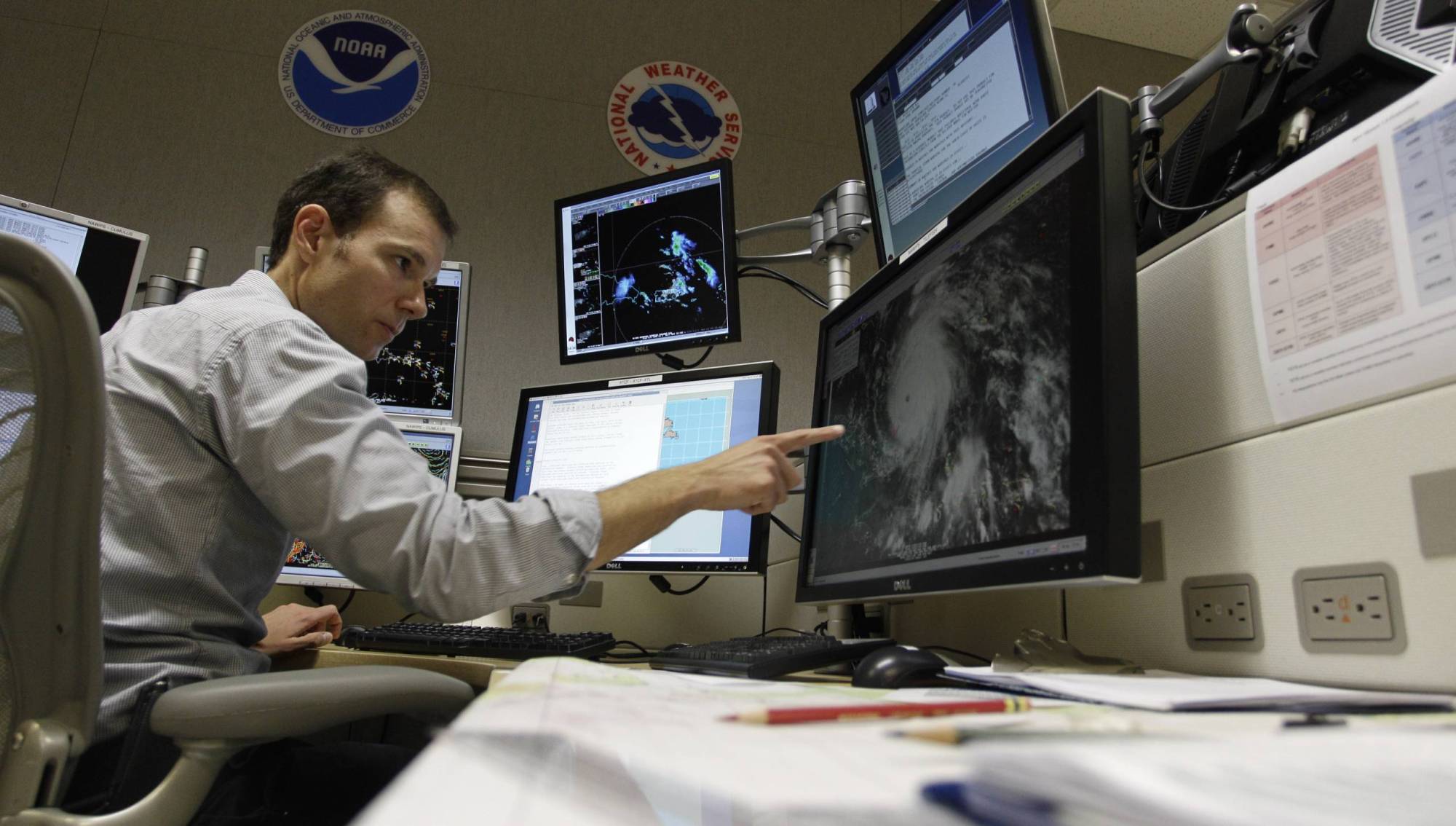In 2024, “the weather service has played an outsized role in peoples’ lives all around the country given the relatively extreme volume of extreme weather events we’ve seen — including some record-breaking ones — that 50, 60, 70 years ago probably would have killed hundreds of people if not thousands of people,” he said. “This time [the events] killed 10 to 100 times fewer people and resulted in many billions of dollars less in damages. That’s just this year.”
Seth Olyer, the president of Oakland’s firefighter union, said the department uses NOAA data to adjust staffing for red flag days and high wind events and ahead of storms that down trees and power lines and prompt evacuations.
“The day of the Keller Fire, we had upstaffed the amount of fire engines that were on the street from Oakland, and they were up in the hills patrolling because of the high wind event,” he said. “We have more people, more boots on the ground, to deal with the situation to keep small incidents small.”
“These are frequently matters of life and death,” he continued.
Air traffic controllers and the agriculture industry also rely on the weather data.
“I actually think it could impact farming as we know it,” said Andy Naja-Riese, the executive director of the Agricultural Institute of Marin.
He said farmers use weather modeling to make decisions every day — ensuring that they don’t plant crops before intense rains that would wash away seeds, staffing agricultural workers for harvest during heat waves, and preparing frost-prone crops for freezes. Ranchers also look at modeling to decide when livestock should be roaming outdoors.
“We grow a lot of wine grapes in the North Bay,” Naja-Riese told KQED. “Thinking through irrigation patterns and understanding how to prepare for things like when to water crops, let’s say, in the summer if there are forecasts of really intense heat that’s coming. You want to be able to plan for these types of activities, and you need reliable data to make that happen.”
Swain said that there are some private weather providers that give more agriculture-specific information, but that data comes from the weather service — as do commercial weather services and GPS apps found on Apple and Google devices.
“Where do you think the information in the Weather app comes from? It comes from NOAA,” Lofgren said.
Privatizing comes with costs
If the NWS — which costs individual taxpayers around $3 a year — were to be privatized, it would be expensive and likely time-consuming.
Noah Diffenbaugh, a senior fellow at Stanford’s Doerr School of Sustainability, said a look at the budget of the federal programs gives a good idea of what it would take for a private company to run a comprehensive weather service. In 2023, the NWS had a budget of about $1.3 billion, while NOAA’s as a whole was $6.3 billion. That doesn’t include the investments needed to set up the infrastructure the federal government has built over the years.
“Our satellite observing systems that have now been in place for more than 40 years — that for a long time has really been dependent on government investments in satellite development,” Diffenbaugh said.
“While there certainly we can leverage knowledge that’s been developed, the reality is that the operational capabilities in terms of the real-time forecasts, the real-time warnings, the real-time response, you know, that’s all that’s all needed going forward,” he told KQED.
Creating new infrastructure would also take time. Climate scientist Swain said any gap in data would be dangerous.
“People would die in extreme weather events who would not have otherwise, [and the] economy would suffer,” Swain wrote on Threads on Wednesday. “Even a temporary or partial interruption in NOAA/NWS 24/7 lifesaving services — which are often used in an hour-by-hour (even minute-by-minute) context — would have this effect.”
Lofgren said that if Trump does move to dismantle the agency, which he doesn’t have the authority to do, it would take bipartisan support to stop him in Congress.
“Republicans control every level of government — the White House, the Senate, the House,” she told KQED. “We don’t have the capacity to put a bill on the floor.
“But we are fighting back. We’re taking whistleblower accounts and looking at what channels we might have in the democratic system.”
KQED’s Natalia Navarro contributed to this report.


